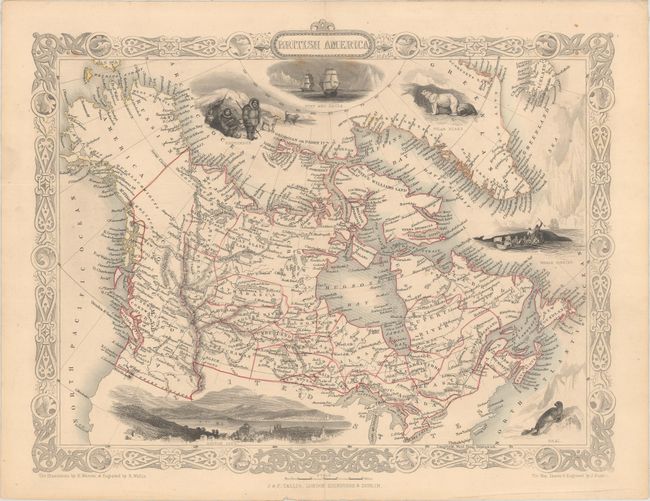Subject: Canada & Alaska
Period: 1850 (circa)
Publication: Illustrated Atlas and Modern History of the World
Color: Hand Color
Size:
12.9 x 10.1 inches
32.8 x 25.7 cm
The maps from The Illustrated Atlas were first published in serial form to a target audience that led insular lives due to the expense and hardship of travel. All that changed as the progress of the nineteenth century brought swift and dramatic changes in public awareness of far away places. Tallis' maps no doubt played an important role in this dramatic awakening. These maps not only provided up-to-date geographical knowledge, but also used vignette views within the map's design to show the native people and their occupations, cities and points of interest. The maps hark back to a cartographic tradition from the Dutch mapmakers of the seventeenth century with finely engraved decorative borders. The maps were drawn and engraved by John Rapkin with views drawn and engraved by a number of prominent artists. The maps were issued as a complete volume from 1851 until about 1865. Some of the maps were also published in other history books published by Tallis including British Colonies and, without the vignettes, in geographical dictionaries and encyclopedias until about 1880.
This decorative map is surrounded in a delicately engraved border and further embellished with six vignettes. The area mapped extends to show all of today's Canada and Alaska, here called Russian America. In Canada, at least 23 districts are outlined. Dots indicate the numerous forts and principal stations of the Hudson's Bay Company. This edition includes a bird's-eye view of Boston City, a seal, whale fishing, Eskimos (here called Esquimaux), polar bears, and a nautical scene showing the ships Fury and Hecla, which made expeditions to the Arctic in search of the Northwest Passage under William Edward Parry. The illustrations are by H. Warren and engraved by Robert Wallis; the map is drawn and engraved by J. Rapkin.
References:
Condition: B+
Original outline color. There are a few light spots of foxing in upper portion of map, some short edge tears in the blank margins, and remnants of hinge tape on verso.


